247 scholarly books by University Press of New England and 11
have author last names that start with H
247 scholarly books by University Press of New England and 11
247 scholarly books by University Press of New England
11 have author last names that start with H have author last names that start with H
11 have author last names that start with H have author last names that start with H
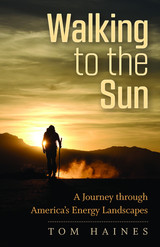
Walking to the Sun
A Journey through America's Energy Landscapes
Tom Haines
University Press of New England, 2018
On a winter day in 2013, Tom Haines stood in front of his basement furnace and wondered about the source of the natural gas that fueled his insulated life. During the next four years, Haines, an award-winning journalist and experienced wanderer, walked hundreds of miles through landscapes of fuel—oil, gas, and coal, and water, wind, and sun—on a crucial exploration of how we live on Earth in the face of a growing climate crisis. Can we get from the fossil fuels of today to the renewables of tomorrow? The story Haines tells in Walking to the Sun is full not only of human encounters—with roustabouts working on an oil rig, farmers tilling fields beneath wind turbines, and many others—but also of the meditative range that arrives with solitude far from home. Walking to the Sun overcomes the dislocation of our industrial times to look closely at the world around us and to consider what might come next.
[more]
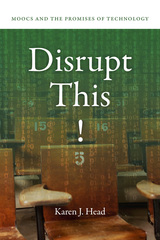
Disrupt This!
MOOCs and the Promises of Technology
Karen J. Head
University Press of New England, 2017
In this smart and incisive work, Karen J. Head describes her experience teaching a Massive Open Online Course (MOOC) and the attendant pressure on professors, especially those in the humanities, to embrace new technologies in the STEM era. And yet, as she argues, MOOCs are just the latest example of the near-religious faith that some universities have in the promise of technological advances. As a teacher of rhetoric, Head is well versed at sniffing out the sophistry embedded in the tech jargon increasingly rife in the academy. Disrupt This! is a broader-based critique of the promises of technological “disruption” and the impact of Silicon Valley thinking on an unsuspecting, ill-prepared, and often gullible university community grasping for relevance, while remaining in thrall to the technologists.
[more]

In Julia's Kitchen
Practical and Convivial Kitchen Design Inspired by Julia Child
Pamela Heyne
University Press of New England, 2016
“Most architects I know don’t know anything about cooking, and their designs are not practical for cooks!” Julia Child wrote to architect Pamela Heyne. Indeed, our contemporary kitchens are showplaces with islands, hidden appliances, and cold stone surfaces. They resemble laboratories more than the heart of the home, and they are neither cook friendly nor family friendly. American culinary icon Julia Child embraced the significance of the family meal and was devoted to sharing delicious food with friends and family at the comfortable dining table in her kitchen, a place where conversation was as important as cuisine. Pamela Heyne and Julia’s long-time food photographer Jim Scherer collaborate to share Julia’s kitchen design and lifestyle concepts in this book, which examines the kitchens in her Cambridge, Massachusetts, home; at la Pitchoune, the Childs’ French vacation retreat; and in her television studio. The authors reveal which materials, layouts, and equipment Julia preferred and why, providing practical advice interspersed with Julia’s inimitable, wry humor. They bring Julia’s wisdom into the contemporary kitchen, exploring current trends, including modern green sensibilities, and varied styles of kitchens, featuring architectural designs by Heyne, Jacques Pepin’s kitchen, a renovation Julia Child consulted on for PBS’s This Old House, several celebrity home kitchens, and more.
[more]
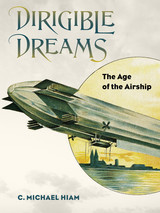
Dirigible Dreams
The Age of the Airship
C. Michael Hiam
University Press of New England, 2014
Here is the story of airships—manmade flying machines without wings—from their earliest beginnings to the modern era of blimps. In postcards and advertisements, the sleek, silver, cigar-shaped airships, or dirigibles, were the embodiment of futuristic visions of air travel. They immediately captivated the imaginations of people worldwide, but in less than fifty years dirigible became a byword for doomed futurism, an Icarian figure of industrial hubris. Dirigible Dreams looks back on this bygone era, when the future of exploration, commercial travel, and warfare largely involved the prospect of wingless flight. In Dirigible Dreams, C. Michael Hiam celebrates the legendary figures of this promising technology in the late nineteenth and early twentieth centuries—the pioneering aviator Alberto Santos-Dumont, the doomed polar explorers S. A. Andrée and Walter Wellman, and the great Prussian inventor and promoter Count Ferdinand von Zeppelin, among other pivotal figures—and recounts fascinating stories of exploration, transatlantic journeys, and floating armadas that rained death during World War I. While there were triumphs, such as the polar flight of the Norge, most of these tales are of disaster and woe, culminating in perhaps the most famous disaster of all time, the crash of the Hindenburg. This story of daring men and their flying machines, dreamers and adventurers who pushed modern technology to—and often beyond—its limitations, is an informative and exciting mix of history, technology, awe-inspiring exploits, and warfare that will captivate readers with its depiction of a lost golden age of air travel. Readable and authoritative, enlivened by colorful characters and nail-biting drama, Dirigible Dreams will appeal to a new generation of general readers and scholars interested in the origins of modern aviation.
[more]
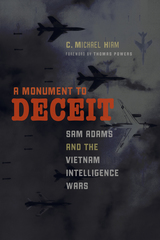
A Monument to Deceit
Sam Adams and the Vietnam Intelligence Wars
C. Michael Hiam
University Press of New England, 2014
It was an enigma of the Vietnam War: American troops kept killing the Viet Cong—and being killed in the process—and yet their ranks continued to grow. When CIA analyst Sam Adams uncovered documents suggesting a Viet Cong army more than twice as large as previously reckoned, another war erupted, this time within the ranks of America’s intelligence community. Although originally clandestine, this conflict involving the highest levels of the U.S. government burst into public view during the acrimonious lawsuit Westmoreland v. CBS. The central issue in the suit, as in the war itself, was the calamitous failure of U.S. intelligence agencies to ascertain the strength of the Viet Cong and get that information to troops in a timely fashion. The legacy of this failure—whether caused by institutional inertia, misguided politics, or individual hubris—haunts our nation. In the era of Chelsea Manning, Julian Assange, and Edward Snowden, Sam Adams’ tireless crusade for “honest intelligence” resonates strongly today.
[more]
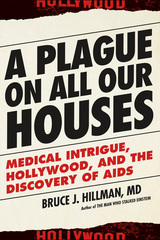
A Plague on All Our Houses
Medical Intrigue, Hollywood, and the Discovery of AIDS
Bruce J. Hillman
University Press of New England, 2016
A frightening new plague. A medical mystery. A pioneering immunologist. In A Plague on All Our Houses, Dr. Bruce J. Hillman dissects the war of egos, money, academic power, and Hollywood clout that advanced AIDS research even as it compromised the career of the scientist who discovered the disease. At the beginning of the worldwide epidemic soon to be known as AIDS, Dr. Michael Gottlieb was a young immunologist new to the faculty of UCLA Medical Center. In 1981 he was brought in to consult on a battery of unusual cases: four formerly healthy gay men presenting with persistent fever, weight loss, and highly unusual infections. Other physicians around the country had noted similar clusters of symptoms, but it was Gottlieb who first realized that these patients had a new and deadly disease. He also identified the defect in their immune system that allowed the disease to flourish. He published his findings in a now-iconic lead article in the New England Journal of Medicine—an impressive achievement for such a young scientist—and quickly became the focal point of a whirlwind of panic, envy, desperation, and distrust that played out against a glittering Hollywood backdrop. Courted by the media, the gay community, and the entertainment industry, Gottlieb emerged as the medical face of the terrifying new epidemic when he became personal physician to Rock Hudson, the first celebrity AIDS patient. With Elizabeth Taylor he cofounded the charitable foundation amfAR, which advanced public awareness of AIDS and raised vast sums for research, even as it struggled against political resistance that began with the Reagan administration and trickled down through sedimentary layers of bureaucracy. Far from supporting him, the UCLA medical establishment reacted with dismay to Gottlieb’s early work on AIDS, believing it would tarnish the reputation of the Medical Center. Denied promotion and tenure in 1987, Gottlieb left UCLA for private practice just as the National Institutes of Health awarded the institution a $10 million grant for work he had pioneered there. In the thirty-five years since the discovery of AIDS, research, prevention, and clinical care have advanced to the point that the disease is no longer the death sentence it once was. Gottlieb’s seminal article is now regarded by the New England Journal of Medicine as one of the most significant publications of its two-hundred-year history. A Plague on All Our Houses offers a ringside seat to one of the most important medical discoveries and controversies of our time.
[more]

Hot Hands, Draft Hype, and DiMaggio's Streak
Debunking America's Favorite Sports Myths
Sheldon Hirsch
University Press of New England, 2017
In sports there are lies, damned lies, and statistics. Joe DiMaggio’s fifty-six-game hitting streak was magical. The three-point shot is an essential part of NBA basketball. Babe Ruth shouldn’t have attempted to steal second base in the ninth inning of the 1926 World Series. Scientist and researcher Sheldon Hirsch has taken a decidedly unorthodox approach to sports history. He looks at myths, legends, conventional wisdom, shibboleths, and firm convictions of all kinds that sports lovers hold to be true, and demonstrates how analysis of facts and figures disproves what tradition—and sportswriters—would have us believe. Divided into three parts, on baseball, basketball, and football, Hot Hands, Draft Hype, and DiMaggio’s Streak contains enough clear-sightedness and shocking conclusions to delight any sports lover.
[more]
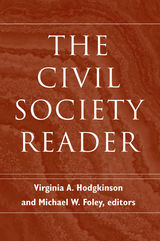
The Civil Society Reader
Virginia Hodgkinson
University Press of New England, 2003

Al Qaeda Declares War
The African Embassy Bombings and America’s Search for Justice
Tod Hoffman
University Press of New England, 2014
Three years before the events of 9/11, Osama bin Laden sent al Qaeda suicide bombers on a coordinated attack to destroy the U.S. embassies in Nairobi, Kenya, and Dar es Salaam, Tanzania. That day, August 7, 1998, more than two hundred people were killed and thousands were wounded. Responding immediately, the FBI launched the largest international investigation in its history. Within months, suspects were arrested in six countries. The U.S. Attorney for the Southern District of New York indicted twenty-two individuals, including the elusive bin Laden. In February 2001 a landmark trial of four of the accused was held in Manhattan in the shadow of the World Trade Center. Al Qaeda Declares War: The African Embassy Bombings and America’s Search for Justice explores the step-by-step procedures the United States employed in analyzing these attacks, identifying the suspects, tracking down and apprehending them, building a case, and prosecuting them. It is this case that established the legal basis for hunting down bin Laden, and the trial makes for a gripping courtroom drama, in which the robust principles of American justice confront the fanaticism of true believers. Tod Hoffman argues forcefully that the process after the 1998 incident stands in marked contrast to the illegal detention, torture, and abrogation of rights that followed 9/11. Indeed, reverberations from the African embassy bombings continue in the ongoing hunt for perpetrators still at large, and in targeted killings by drones. Al Qaeda Declares War dramatically recounts the terror and bloodshed of that day in Africa and shows that America’s search for justice afterward offers important lessons for today.
[more]

British Atlantic, American Frontier
Spaces of Power in Early Modern British America
Stephen J. Hornsby
University Press of New England, 2004
Reflecting the growing scholarly interest in transnational and comparative approaches to studying the past, British Atlantic, American Frontier offers a geographical perspective on the development of British America in the seventeenth and eighteenth centuries. It covers in detail not only the American eastern seaboard, but also eastern Canada and the West Indies, as well as the trans-Atlantic links to Western Europe and West Africa. At one level, the book synthesizes much of the current historical and geographical scholarship on these regions; at another level, it offers a provocative interpretation of British America, arguing that profound and long-standing differences existed between the American eastern seaboard and the Atlantic regions of eastern Canada and the West Indies. These differences ultimately led to the break-up of British America, the creation of the United States, and the reconfiguration of the British Empire. British Atlantic, American Frontier is illustrated with more than one hundred photographs, maps, and historical illustrations.
[more]

Thomas C. Hubka
University Press of New England
“Big house, little house, back house, barn”—this rhythmic cadence was sung by nineteenth-century children as they played. It also portrays the four essential components of the farms where many of them lived. The stately and beautiful connected farm buildings made by nineteenth-century New Englanders stand today as a living expression of a rural culture, offering insights into the people who made them and their agricultural way of life. A visual delight as well as an engaging tribute to our nineteenth-century forebears, this book has become one of the standard works on regional farmsteads in America.
[more]
READERS
Browse our collection.
PUBLISHERS
See BiblioVault's publisher services.
STUDENT SERVICES
Files for college accessibility offices.
UChicago Accessibility Resources
home | accessibility | search | about | contact us
BiblioVault ® 2001 - 2024
The University of Chicago Press









